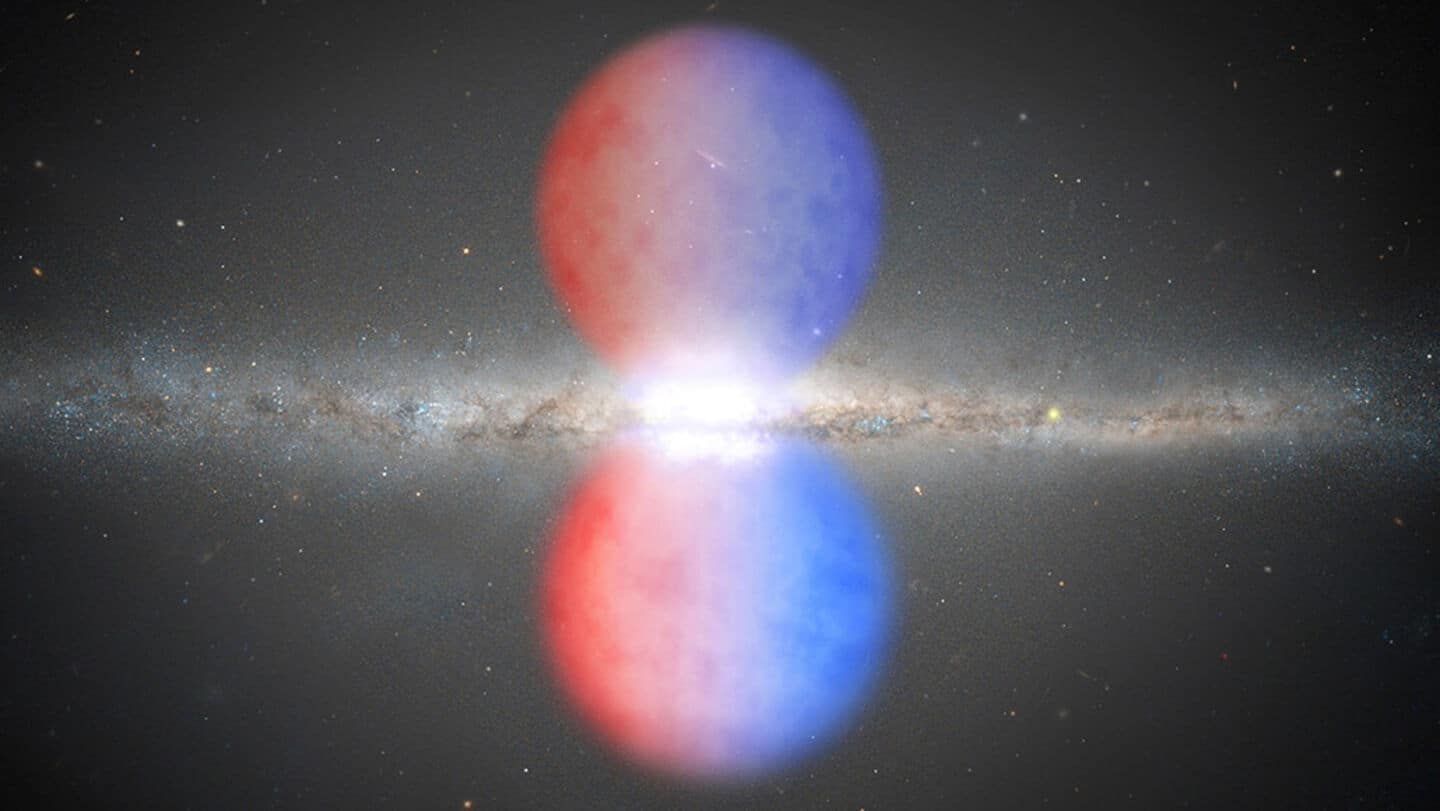
Watch: Cold hydrogen clouds found in center of Milky Way
What's the story
Astronomers have made a groundbreaking discovery of cold hydrogen clouds nested within the superheated gas clouds, or Fermi bubbles, at the heart of our Milky Way galaxy. The finding contradicts existing theories about how these bubbles form and suggests that they are much younger than previously thought. The research was published in The Astrophysical Journal Letters by a team led by Rongmon Bordoloi from North Carolina State University.
Bubble details
What are Fermi bubbles?
The Fermi bubbles are massive structures of hot gas that stretch above and below the Milky Way's disk, covering some 25,000 light years in each direction from the galaxy's center. These bubbles were first discovered by gamma-ray telescopes in 2010. Although their exact origin is still debated, it is believed to be a violent event similar to a volcanic eruption on an enormous scale.
Cloud discovery
A look at the observations
The research team used the US National Science Foundation's Green Bank Telescope to study the Fermi bubbles and gather detailed data about their gas composition and movement. Their observations revealed something unexpected: dense clouds of neutral hydrogen gas, each several thousand solar masses in size, located within bubbles 12,000 light years above the Milky Way's center. Such clouds are much cooler than their surroundings by at least a factor of 100.
Theory challenges
Why existence of cold hydrogen clouds is surprising?
The existence of these cold hydrogen clouds is surprising because the hot, high-velocity environment of the nuclear outflow should have quickly destroyed any cooler gas. Computer models show that the cool gas interacting with hot outflowing gas in extreme environments such as the Fermi bubbles must be rapidly destroyed, usually within a few million years. This discovery also matches the ultraviolet observations from the Hubble Space Telescope, which found highly ionized multiphase gas in expected temperature ranges.